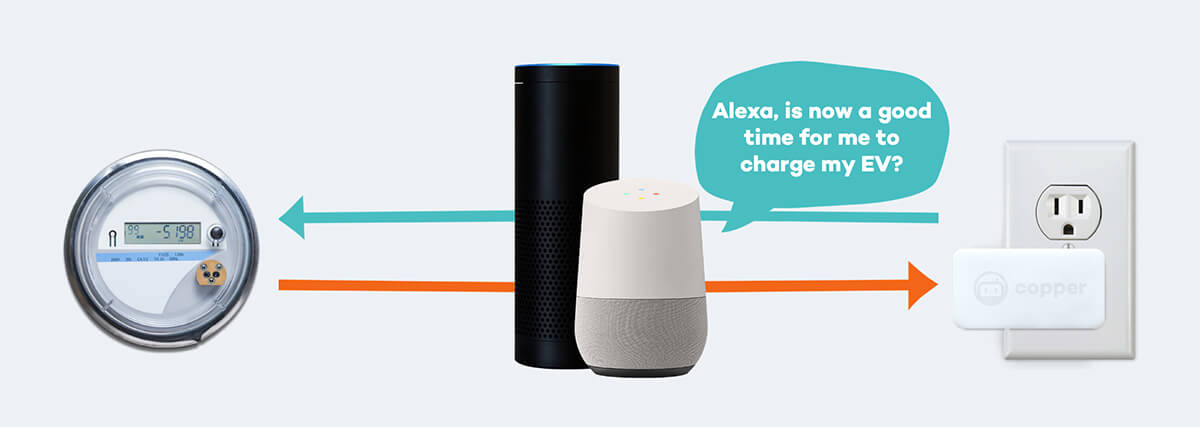With increased renewables and more costly extreme weather events, when energy is used is more important than ever.
Changes in how electricity is produced, stored, managed and used are forcing the nation’s utilities to adjust how the grid operates.
In 2020, the deployment of distributed energy resources (DER) outpaced that of centralized generation for the first time. Additionally, the combination of deferred maintenance on aging infrastructure and significant shifts in energy usage patterns and load shapes fueled by the COVID-19 pandemic has exposed some of the troubling deficiencies facing our grid and underscored the urgent need for improved grid intelligence.
That’s where wireless real-time energy management (WREM) comes in. A cohesive tool for utility program managers seeking to close the gap between grid need and consumers’ growing desire for energy control and home comfort, WREM empowers electric, gas and water utilities with the granular knowledge they need for customer engagement in strategic demand management in order to ensure grid reliability.
What is Wireless Real-Time Energy Management (WREM)?
As the name implies, WREM solutions are wireless, and they use existing broadband networks to access revenue-grade meter data, without the need for an electrician. By using existing networks for low cost and extensive accessibility, WREM solutions deliver real-time energy and voltage data at sub-minute intervals for relevant insights when it matters most to the grid. The real-time information WREM solutions deliver enables utilities and their customers to align the balance of energy supply and demand.
Peak Demand Management Supports the Grid
On hot summer days or during extreme winter storms, increased energy demand can exhaust the available supply and stress the grid. During these periods of peak demand, the ability to dispatch demand response (DR) events to customers within narrow geographic bounds is critical. Temporally and locationally targeting demand interventions is imperative for program managers aiming to drive savings in a cost-effective manner.
Fortunately, WREM solutions can also target such events at specific large-consumption devices that encourage customers to use less energy or shift their energy usage to off-peak times. For example, utility program managers might notify electric vehicle (EV) owners of a DR event, suggesting an appropriate time to resume charging, or they might alert customers to shift their thermostat set points.
Geographic and appliance-level targeting not only helps mitigate fatigue since only relevant customers will be notified to participate in DR events, but it also gives utilities greater control, enabling program managers to balance geographic and technological demands over time. By shifting the timing of energy consumption to reduce stress on the electricity grid during peak periods, flexible loads enable homes and buildings to act as distributed energy assets for the grid, which can drive significant cost savings.

Even better, appliance-level targeting also helps establish a smart home ecosystem. While smart thermostats that help consumers reduce the cost of heating and cooling are proliferating, EVs, window A/C units, dryers, pool pumps and other appliances significantly impact the energy system, and many of those devices aren’t smart — at least not yet. However, WREM technologies can integrate with smart home devices, such as voice-activated speakers, to optimize energy usage whether energy-consuming appliances are connected or not. Now, consumers can ask their smart speaker how much energy they’re using and how their energy usage compares to other periods, which is incredibly valuable for customers on time-of-use rates or those who are motivated by sustainability and want to avert the need for fossil fuel peaker plants to turn on during periods of peak demand.
Clearly, personalized, real-time insights empower energy consumers to manage demand in the moment. Even information taken from AMI meters and customer portals is too late for effective, efficient energy management, and disaggregating smaller appliances weeks later doesn’t help to manage the load.
By better connecting utilities and their customers, WREM helps align objectives on both sides of the meter, creating opportunities to create a continuous customer experience that increases satisfaction beyond simply incentivizing support of the grid reliability. Targeting DR events at specific large-consumption devices or geographies enables WREM solutions to compel customers to take action that helps stabilize the grid, saves energy, and balances geographic and technological demands over time.
For more information about how utility program managers can engage consumers, manage demand and optimize the grid with scalable, easy-to-implement wireless real-time energy management, download our white paper, Building Real-Time Grid Intelligence.
